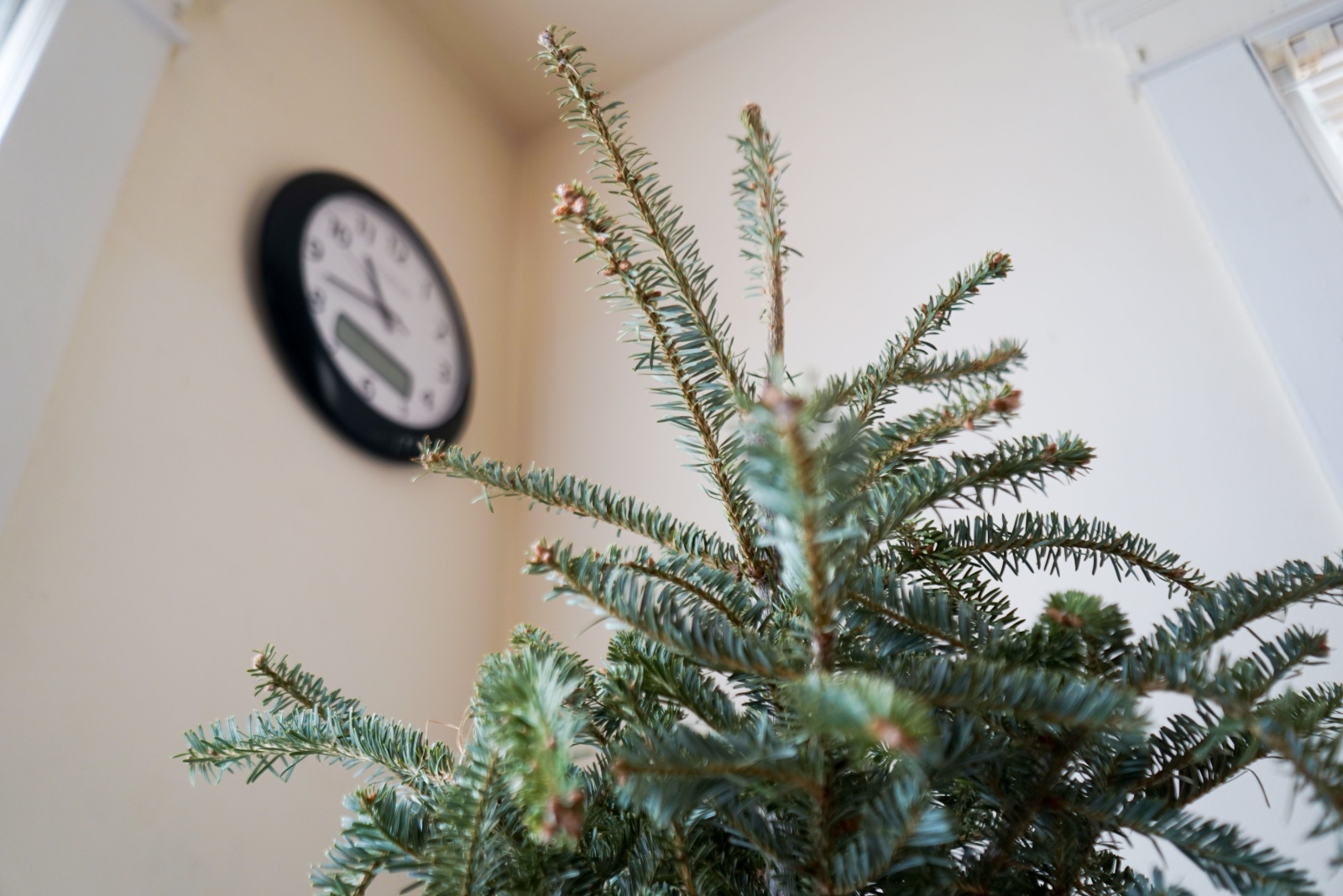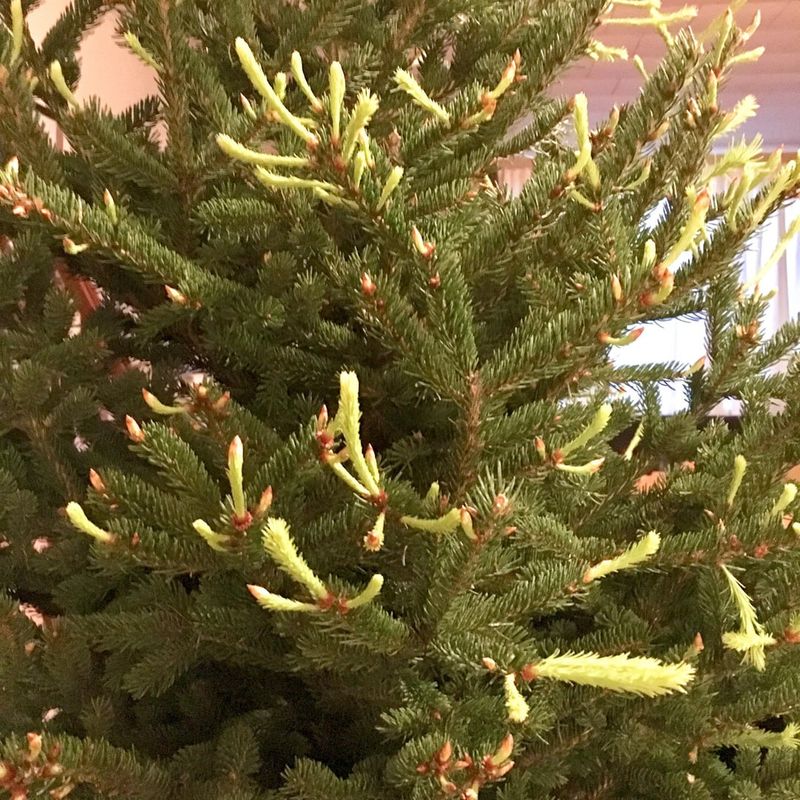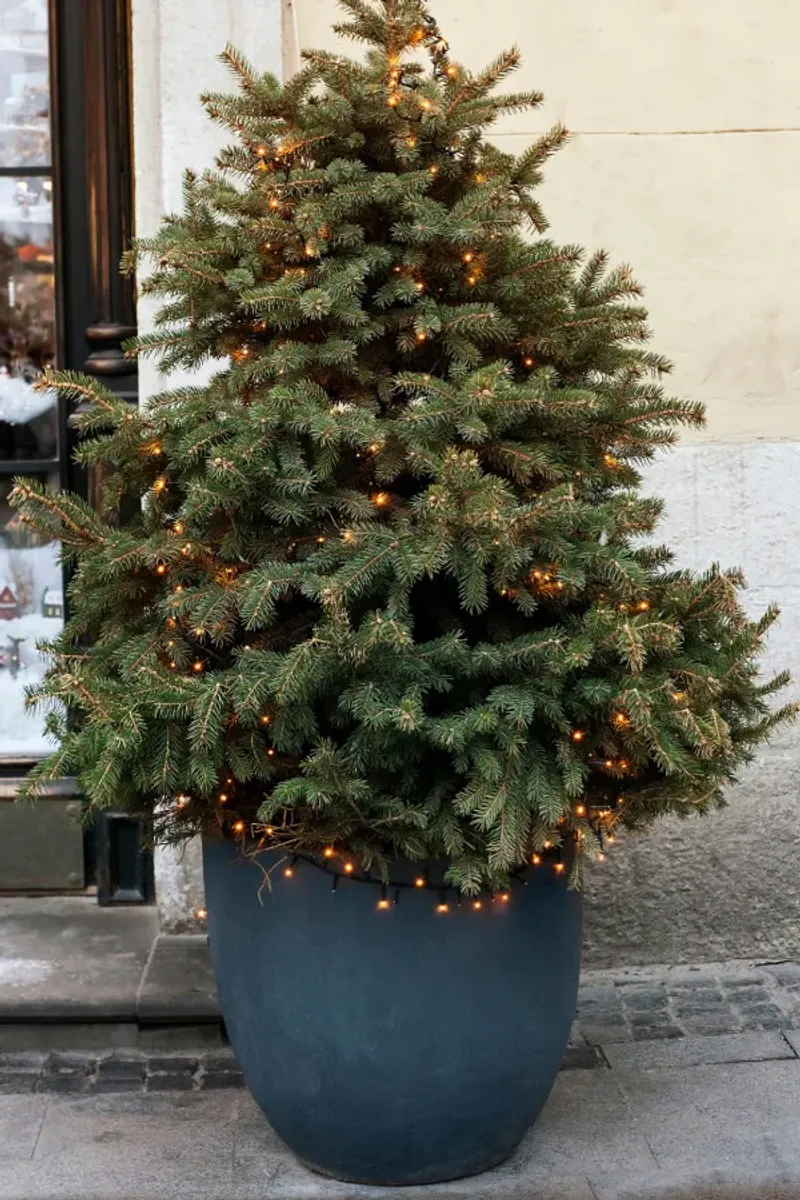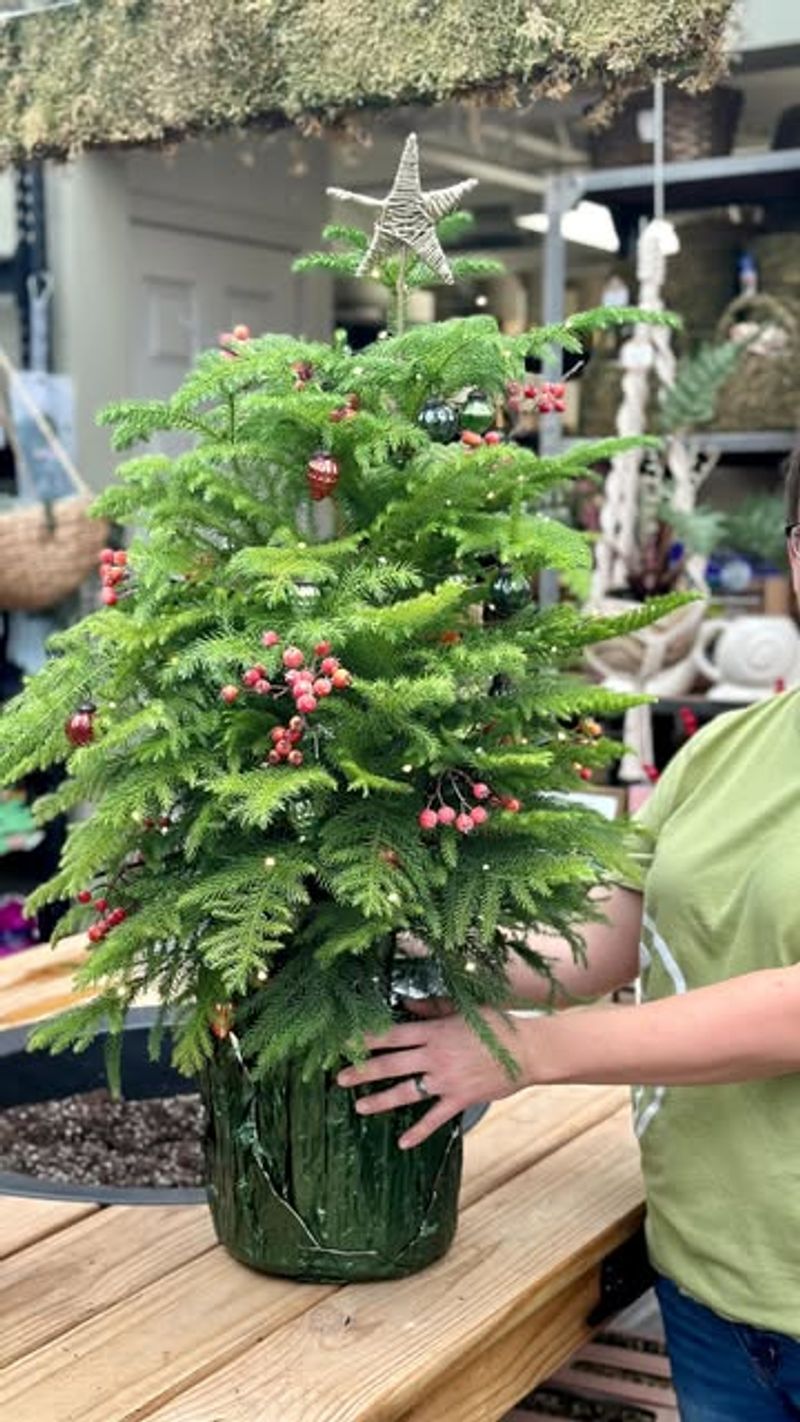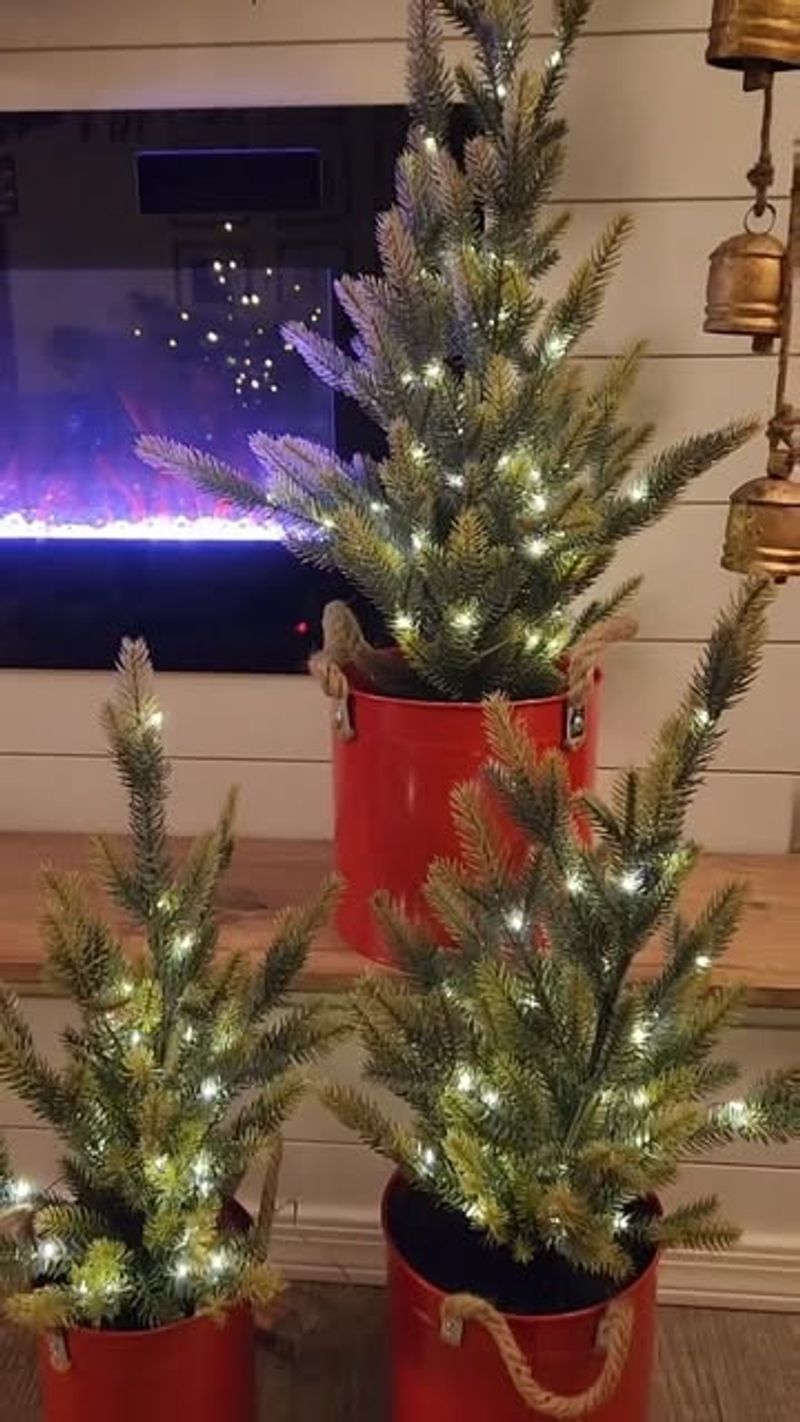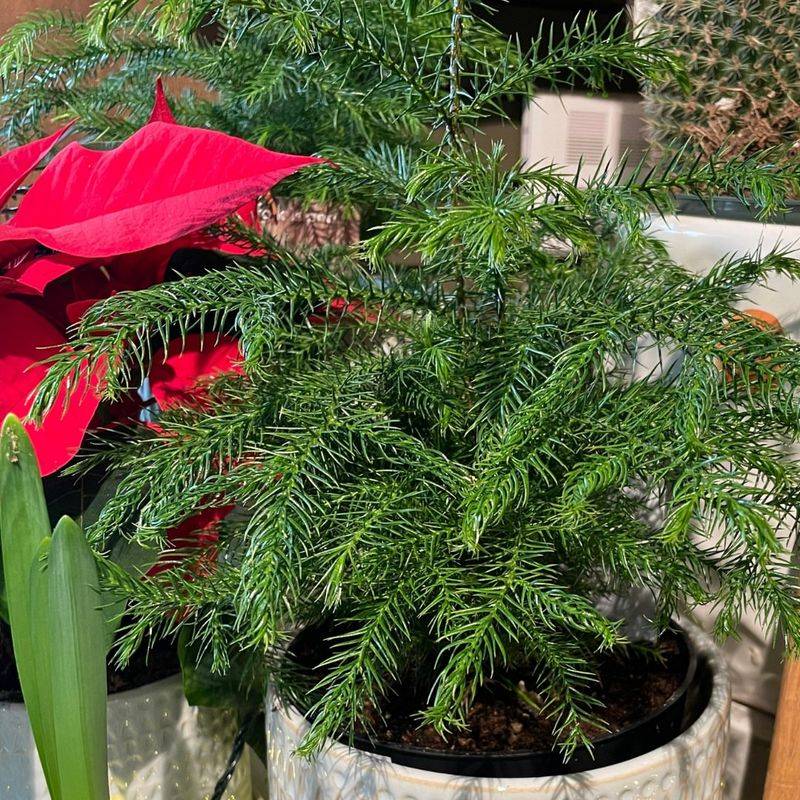Growing a living Christmas tree indoors lets you enjoy that fresh evergreen scent—without the guilt of cutting one down. In Washington, our mild, moist climate makes it easier to keep potted trees healthy through the holidays. It’s a festive choice that’s also eco-friendly.
With a little planning, your tree can thrive inside and transition smoothly to the outdoors after the season ends. Choose a species suited to our region, keep it watered, and avoid placing it near heat sources.
Treat it like a guest, not just a decoration. After the holidays, plant it in your yard and watch it grow year after year. It’s a beautiful way to celebrate the season—and create a lasting memory rooted right at home.
1. Choose Native Washington Species
Douglas Fir and Western Hemlock make excellent indoor Christmas trees because they’re adapted to our Washington climate. I’ve found these native species handle the transition from outdoors to indoors much better than exotic varieties.
My neighbor kept a small Douglas Fir in her living room for three holiday seasons before planting it in her yard. It’s now over 15 feet tall! When selecting your tree, look for smaller specimens under 4 feet tall with a healthy root system.
Container-grown trees are preferable to those freshly dug, as they experience less transplant shock. The smaller size makes decorating easier and ensures the tree won’t outgrow your space too quickly.
2. Prepare For The Temperature Transition
Trees need time to adjust to indoor warmth after living in Washington’s cooler outdoor temperatures. Start by keeping your tree in a garage or covered porch for 3-5 days before bringing it inside.
Last Christmas, I gradually moved my tree from the deck to the mudroom to the living room over a week. This slow transition prevented needle drop and stress. The cooler your indoor temperature, the happier your tree will be.
Try to keep your living room around 65-68°F during the tree’s stay. Avoid placing it near heating vents, fireplaces, or sunny windows where temperature fluctuations could shock the tree.
3. Select The Right Container And Soil
Your tree needs a container at least 2 inches wider than its root ball on all sides. I use a plastic nursery pot inside a decorative container – this setup makes watering easier and protects my floors from moisture.
The soil mix matters tremendously. Our Washington native trees prefer slightly acidic soil that drains well. I mix regular potting soil with a bit of pine bark and perlite to create ideal growing conditions.
Place a layer of gravel at the bottom of the container to improve drainage. Without proper drainage, root rot becomes a serious risk, especially in our damp Washington climate where indoor humidity can fluctuate dramatically during winter.
4. Master The Indoor Watering Schedule
Watering is tricky with indoor trees in Washington’s winter climate. Check moisture daily by sticking your finger an inch into the soil. If it feels dry, it’s time to water. I water mine with about 2 cups twice weekly, adjusting as needed.
A great trick I learned from a local nursery: place ice cubes on top of the soil for slow, steady moisture release. This prevents overwatering, which is actually more dangerous than underwatering for most evergreens.
Humidity matters too. Our heated homes get dry in winter, so mist your tree every few days with room-temperature water. I keep a spray bottle nearby and give my tree a quick spritz whenever I remember.
5. Light Up Your Tree Safely
Living trees need special consideration when it comes to lights and decorations. LED lights run cooler than traditional bulbs, making them safer for your tree’s needles. I stick with just one string of mini LEDs on my 3-foot tree.
Heat from lights can stress a living tree and cause needle drop. Never leave lights on overnight or when you’re away from home. Set them on a timer if you tend to forget, like I used to!
Keep decorations lightweight to avoid stressing branches. Skip the heavy ornaments and tinsel altogether. Tinsel can be particularly problematic if it falls into the soil, as it doesn’t decompose and can interfere with watering.
6. Limit Indoor Time To Preserve Health
Even with perfect care, living trees should spend no more than 7-10 days indoors. Washington’s winter provides ideal outdoor conditions for these trees, while our heated homes stress them significantly. I bring mine in just before Christmas and take it out right after New Year’s.
When my tree isn’t center stage for the holidays, it lives on my covered porch where it gets natural light and cool temperatures. This setup has worked wonderfully for three years running with the same Noble Fir.
If you notice excessive needle drop or branch drooping, move your tree outdoors immediately regardless of your planned schedule. These are stress signals that shouldn’t be ignored, as I learned the hard way with my first attempt!
7. Plan For Post-Holiday Planting
The mild Washington winter is perfect for planting your tree after the holidays. Keep it in a sheltered outdoor location for 1-2 weeks to readjust to outdoor temperatures before planting. My first tree went directly into the ground and suffered shock.
Choose a planting location with well-draining soil at least 10 feet from buildings and power lines, remembering these trees will eventually grow quite large. Our acidic Northwest soil is already ideal for most evergreens.
Dig a hole twice as wide as the root ball but no deeper. Water thoroughly after planting and apply a 2-inch layer of mulch around the base, keeping it away from the trunk. With proper care, your Christmas tree will become a beautiful addition to your Washington landscape.

